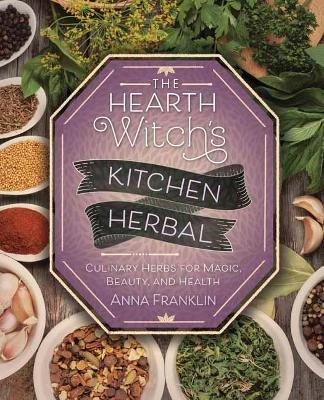
annieb123
Written on Apr 21, 2019
The Hearth Witch's Kitchen Herbal is a guide to using herbs more completely in daily mundane and spiritual life. As the author is a practicing witch and pagan, there is a broader scope of information in this volume than most other culinary herbals.
Released 8th April 2019 by Llewellyn, it's 251 pages and available in paperback and ebook formats.
It's logically arranged with an introduction/tools chapter followed by chapters covering recipes for internal and external remedies, cosmetic uses, and finally a chapter on magical uses of herbs. These four chapters encompass roughly 10% of the book's content. The recipes included in these chapters are very general and basic. I was concerned to read that she recommends using petroleum jelly in salves (though her alternative recipe uses beeswax). The other ingredients are natural and sensible.
The intro chapters are followed by an alphabetical herbal with many herbs listed (including proper botanical names to avoid confusion). The herb listings also include appealing line drawings of the plants and this section is impressively well footnoted, providing a rich source of citations for further reading. The individual herb listings also include specific recipes for rinses, salves, decoctions, masks, shampoos, etc.
The final 20% of the book includes the appendices for magical and color correspondences for the herbs used in the book, a glossary, weights and measures, bibliography, recipe list, and index.
The book has uses well beyond the spiritual. The recipes (apart from the petroleum jelly ones) are safe and sensible. There maybe isn't a great deal of really groundbreaking info here, but it is unquestionably convenient to have everything gathered into one volume. The typeface and chapter headers give the whole book a very nostalgic vibe which is appealing. A conscious decision (editorial?) was made at some point and the only photograph in the entire book is on the cover. There are some interesting herbs missing from the text, for example: mullein, comfrey, calendula, savory (mentioned in passing), etc.
All in all, interesting especially for practitioners or would-be seekers.
Three stars.
Disclosure: I received an ARC at no cost from the author/publisher for review purposes.

